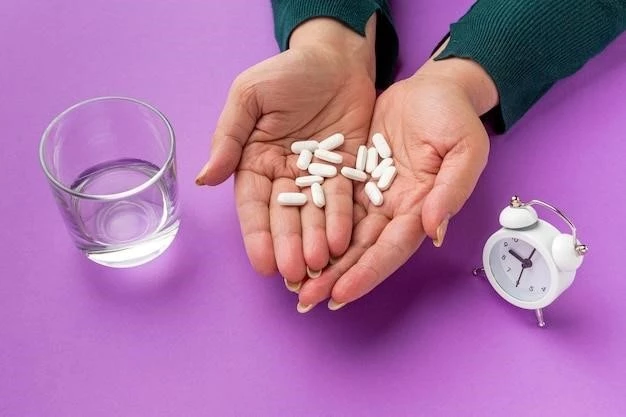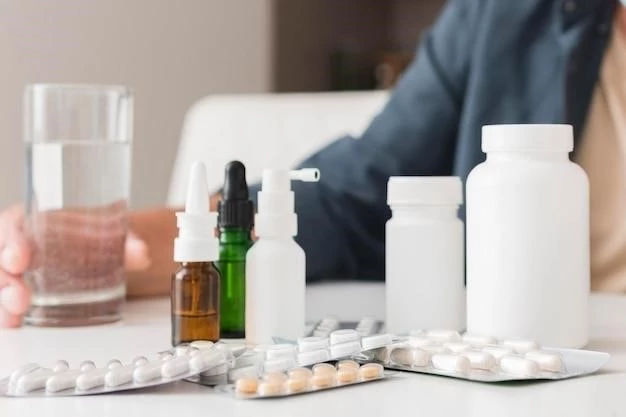Terbinafine⁚ Overview and Uses
Terbinafine is an antifungal medication used to treat fungal infections on the skin and nails. It belongs to a class of drugs known as allylamines. Terbinafine works by stopping the growth of fungi. This medication is commonly prescribed for conditions such as athlete’s foot, ringworm, and fungal nail infections.
Understanding Terbinafine
Terbinafine, a potent antifungal agent, inhibits the synthesis of ergosterol in fungal cells, disrupting their cell membrane integrity. This action leads to fungal cell death. Terbinafine is available in oral and topical forms, with oral tablets used for systemic fungal infections and topical creams for localized skin conditions. Understanding the mechanism of action of terbinafine is crucial for its effective use in treating various fungal infections.
Medical Uses of Terbinafine
Terbinafine is prescribed by healthcare providers to treat various fungal infections, including athlete’s foot, ringworm, jock itch, and fungal nail infections. It is also effective in managing pityriasis versicolor, a superficial fungal infection of the skin. Additionally, terbinafine can be used to treat candidiasis that does not respond to other antifungal medications. The broad spectrum of medical uses of terbinafine highlights its significance in the management of diverse fungal conditions.
Terbinafine⁚ Side Effects and Symptoms
Common side effects of terbinafine may include gastrointestinal upset, rash, headache, and taste disturbances. In rare cases, serious side effects such as liver problems and severe skin reactions may occur. It is important to be aware of these potential side effects when using terbinafine.
Common Side Effects of Terbinafine
Common side effects of terbinafine, an antifungal medication, may include gastrointestinal disturbances like nausea, diarrhea, or abdominal pain. Other frequent side effects can involve skin reactions such as rash or itching. Additionally, some individuals may experience altered taste sensation or a mild headache while using terbinafine. Monitoring and addressing these common side effects are essential during treatment.
Serious Symptoms Requiring Medical Attention
Serious side effects of terbinafine necessitating immediate medical attention may include signs of liver problems like persistent nausea, abdominal pain, dark urine, or yellowing of the skin/eyes. Additionally, severe skin reactions such as blistering, peeling, or a severe rash should be promptly reported to a healthcare provider. Any unusual or severe symptoms while using terbinafine warrant urgent medical evaluation to prevent complications.
Terbinafine vs. Other Antifungal Medications
When comparing terbinafine with other antifungal drugs, its potent fungicidal action against a broad spectrum of fungi sets it apart. Terbinafine’s unique mechanism of action makes it a preferred choice for treating various fungal infections, providing effective and targeted treatment outcomes.
Comparison of Terbinafine with Alternative Antifungal Drugs
When comparing terbinafine with alternative antifungal medications, its effectiveness in treating both superficial and systemic fungal infections stands out. Unlike some antifungal drugs that target specific fungi, terbinafine exhibits a broad spectrum of activity. Moreover, the low risk of developing resistance to terbinafine contributes to its sustained efficacy in managing various fungal conditions.
Effectiveness and Safety Profile of Terbinafine
Terbinafine demonstrates high effectiveness in treating fungal infections, with rapid relief of symptoms and eradication of the underlying fungal pathogens. Its safety profile is generally favorable, with most side effects being mild and transient. However, monitoring for potential liver-related adverse effects is crucial during treatment with terbinafine to ensure patient safety and well-being.
Terbinafine⁚ Treatment Duration and Effectiveness
The treatment duration with terbinafine varies depending on the type and severity of the fungal infection. Overall, terbinafine is known for its high effectiveness in treating fungal skin and nail infections, with many patients experiencing significant improvement within weeks of starting treatment.
Recommended Treatment Duration for Various Conditions
For fungal skin infections like athlete’s foot or ringworm, the typical treatment duration with terbinafine ranges from 1 to 4 weeks. Fungal nail infections often require 6 to 12 weeks of terbinafine therapy for optimal results. Prolonged treatment durations may be necessary for severe or recurrent fungal infections, and adherence to the prescribed regimen is vital for successful outcomes.
Factors Affecting the Effectiveness of Terbinafine
Several factors can influence the effectiveness of terbinafine in treating fungal infections, including the type and severity of the infection, the patient’s overall health status, adherence to the prescribed treatment regimen, and the presence of any drug interactions. Adequate dosing, proper application (for topical forms), and completing the full course of treatment are critical for maximizing the effectiveness of terbinafine therapy.
Terbinafine⁚ Interactions with Other Drugs
Awareness of potential drug interactions with terbinafine is vital to prevent adverse effects and ensure treatment efficacy.
Drug Interactions to be Aware of
Terbinafine may interact with certain medications, such as cyclosporine, beta-blockers, and selective serotonin reuptake inhibitors (SSRIs), leading to increased risk of side effects or reduced efficacy. Combining terbinafine with these drugs requires careful monitoring to prevent potential interactions and ensure optimal therapeutic outcomes.
Potential Consequences of Drug Interactions
Failure to recognize and manage drug interactions with terbinafine can lead to adverse outcomes such as increased risk of liver toxicity, irregular heart rhythms, or altered blood pressure. Additionally, drug interactions may diminish the effectiveness of terbinafine or the co-administered medication. Healthcare providers must closely monitor patients for signs of adverse effects when terbinafine is used concomitantly with other drugs.

Terbinafine⁚ Important Safety Information
Understanding safety guidelines and precautions is essential for the safe and effective use of terbinafine.
Precautions and Warnings for Using Terbinafine
Before using terbinafine, inform your healthcare provider about your medical history, especially regarding liver disease or drug allergies. It is important to adhere to the prescribed dosage and treatment duration. Monitoring liver function tests during therapy is essential to prevent potential liver-related adverse effects. Notify your healthcare provider promptly if you experience any unusual symptoms while using terbinafine.
Safety Measures to Follow During Terbinafine Treatment
During terbinafine treatment, it is crucial to follow the prescribed dosage schedule diligently. Avoid consuming excessive alcohol, as it can exacerbate the risk of liver problems. Additionally, be vigilant for signs of liver toxicity, allergic reactions, or any unexpected side effects. Inform your healthcare provider about all medications you are taking to prevent potential drug interactions and optimize the safety of terbinafine therapy.
